The Importance of Physical Activity and Exercise
In today’s sedentary lifestyle, it is more important than ever to prioritize physical activity and exercise. Engaging in regular workouts and maintaining an active lifestyle not only benefits our physical health but also has a significant impact on our overall well-being.
Physical activity encompasses any bodily movement that requires energy expenditure, such as walking, running, swimming, or participating in sports. On the other hand, exercise refers to planned, structured activities aimed at improving fitness levels and achieving specific health goals.
The benefits of exercise and physical activity are numerous. Firstly, they play a crucial role in maintaining a healthy weight by burning calories and increasing metabolism. Regular workouts also help build lean muscle mass while reducing body fat percentage.
Moreover, engaging in physical activity releases endorphins – the feel-good hormones – which can boost mood and reduce stress levels. Exercise has been found to alleviate symptoms of anxiety and depression while promoting better sleep quality.
Furthermore, incorporating regular physical activity into our daily routines enhances cardiovascular health by strengthening the heart muscle and improving blood circulation. It also helps maintain healthy blood pressure levels and reduces the risk of chronic diseases such as heart disease, diabetes, and certain types of cancer.
In addition to these physical benefits, being physically active fosters social interaction through participation in group activities or team sports. It promotes teamwork, camaraderie, and a sense of belonging within communities.
Overall, understanding the importance of physical activity and exercise is crucial for leading a healthy lifestyle. By incorporating regular workouts into our routines, we can reap the countless benefits they offer – from improved physical fitness to enhanced mental well-being. So let’s prioritize our health by making time for exercise!.
Table of Contents
Types of Workouts
1. Cardiovascular Workouts: Boosting Heart Health and Stamina
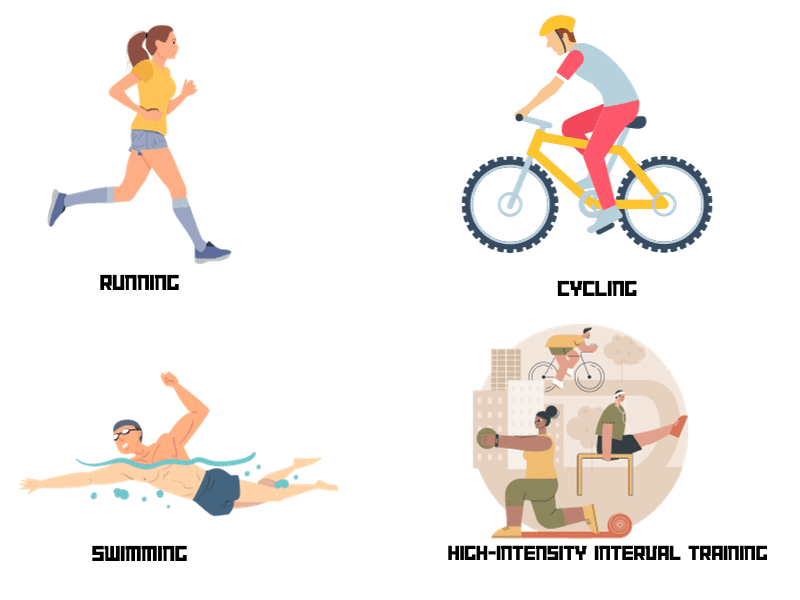
Cardiovascular workouts, also known as aerobic exercises, play a crucial role in boosting heart health and stamina. Engaging in regular cardio exercise has numerous benefits for the body and overall well-being. Some popular forms of cardiovascular workouts include running, swimming, and cycling.
One of the primary benefits of cardiovascular workouts is their positive impact on heart health. Regular cardio exercise helps strengthen the heart muscle, improving its efficiency in pumping blood throughout the body. This can lead to a reduced risk of developing cardiovascular diseases such as heart attacks, strokes, and high blood pressure.
In addition to promoting heart health, cardiovascular workouts also contribute to increased stamina and endurance. By engaging in activities that elevate the heart rate for an extended period of time, individuals can improve their lung capacity and oxygen intake. This allows them to perform physical tasks with greater ease and sustain energy levels for longer durations.
Running is a popular form of cardiovascular exercise that requires minimal equipment and can be done almost anywhere. It not only helps burn calories but also strengthens muscles in the legs and core. Swimming is another excellent choice for cardio workouts as it provides a low-impact full-body workout that engages multiple muscle groups simultaneously.
Cycling is yet another effective way to get your heart pumping while also being gentle on your joints. Whether it’s outdoor cycling or indoor stationary biking, this activity offers a range of intensity levels suitable for individuals at various fitness levels.
Incorporating cardiovascular workouts into your fitness routine can have significant benefits for both your heart health and overall stamina. Whether you choose running, swimming, cycling or any other form of aerobic exercise, regular engagement in these activities will contribute to improved fitness levels and overall well-being.
2. Strength Training Workouts: Building Muscles and Increasing Bone Density
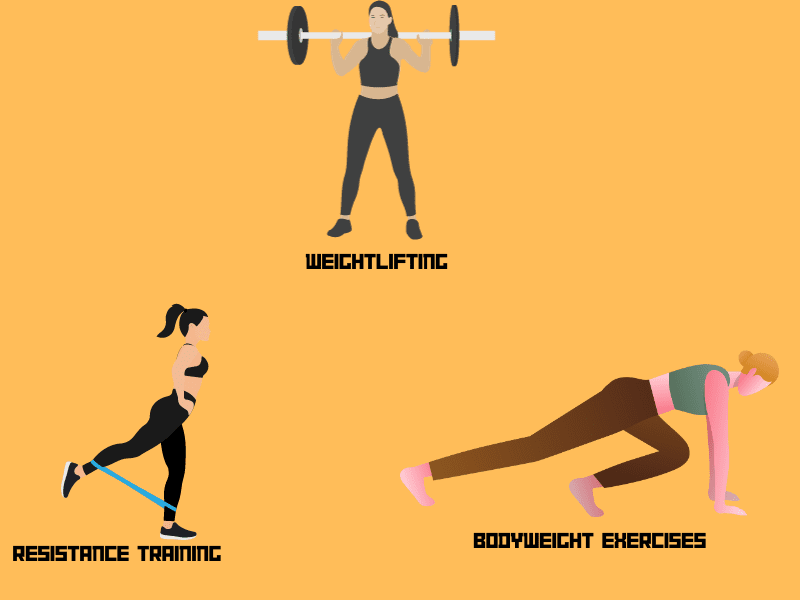
Strength training, also known as resistance training, is a form of exercise that focuses on building muscles and increasing bone density. It involves performing various workouts and exercises that target specific muscle groups using resistance or weights.
One of the key benefits of strength training is its ability to build and strengthen muscles. By engaging in regular strength training workouts, individuals can increase their muscle mass and improve their overall muscular strength. This can be particularly beneficial for athletes looking to enhance their performance or individuals aiming to improve their physical appearance.
In addition to building muscles, strength training also plays a crucial role in increasing bone density. As we age, our bones naturally become weaker and more prone to fractures. However, engaging in weightlifting exercises stimulates the bones to adapt and become denser over time. This helps reduce the risk of osteoporosis and other bone-related conditions.
Moreover, strength training offers a range of other benefits beyond muscle growth and bone density improvement. It can help boost metabolism, leading to increased calorie burn even at rest. This makes it an effective tool for weight management or weight loss goals. Additionally, strength training promotes better posture, balance, and coordination by strengthening the supporting muscles around joints.
When incorporating strength training into your fitness routine, it is important to start with proper form and technique under the guidance of a qualified trainer or instructor. Gradually increasing the intensity and difficulty level will ensure continuous progress while minimizing the risk of injury.
Strength training through resistance exercises such as weightlifting offers numerous benefits including muscle growth, increased bone density, improved metabolism, better posture, balance, and coordination. By incorporating regular strength training workouts into your fitness regimen, you can achieve optimal physical health while reaping these rewards for your body’s overall well-being.
3. Flexibility Exercises: Enhancing Range of Motion and Preventing Injuries
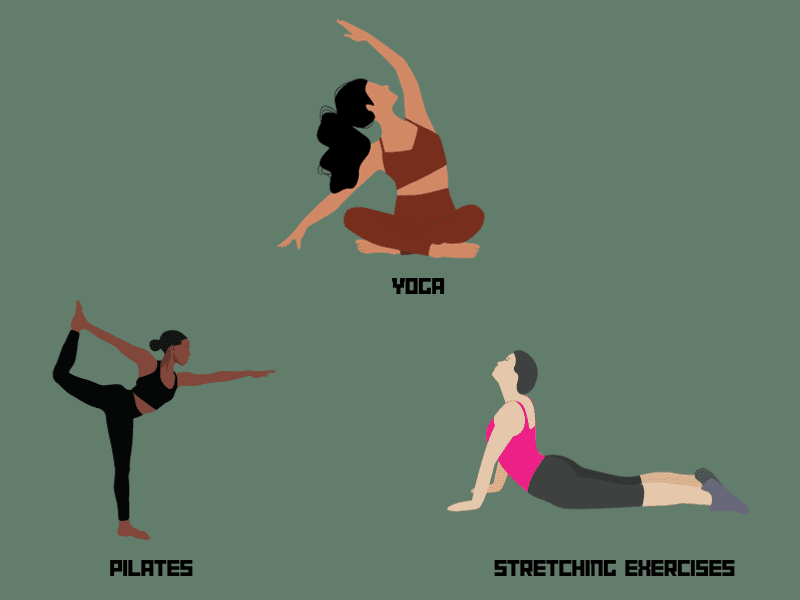
Flexibility exercises play a crucial role in enhancing range of motion and preventing injuries. By incorporating regular stretching routines into your fitness regimen, you can improve your flexibility and overall physical performance.
One of the key benefits of flexibility workouts is the increased range of motion they provide. Flexibility exercises target muscles and joints, helping to lengthen and loosen them. This improved range of motion allows for greater ease of movement in daily activities and sports performance.
Additionally, flexibility exercises can help prevent injuries by improving muscle elasticity and reducing muscle imbalances. When muscles are flexible, they are less prone to strains or tears during physical activity. Stretching also helps to correct muscle imbalances that may occur due to repetitive movements or sedentary lifestyles.
Furthermore, flexibility exercises promote better posture and alignment. By stretching tight muscles, you can alleviate tension in areas such as the neck, shoulders, and lower back, which are common sites for postural issues. Improved posture not only enhances your physical appearance but also reduces the risk of developing chronic pain or discomfort.
Incorporating flexibility exercises into your fitness routine offers numerous benefits such as increased range of motion, injury prevention, improved posture, and enhanced overall physical performance. Whether you are an athlete looking to optimize your training or someone seeking to maintain a healthy lifestyle, regular flexibility workouts should be an essential part of your exercise regimen.
4. High-Intensity Interval Training (HIIT): Burning Calories and Improving Metabolism
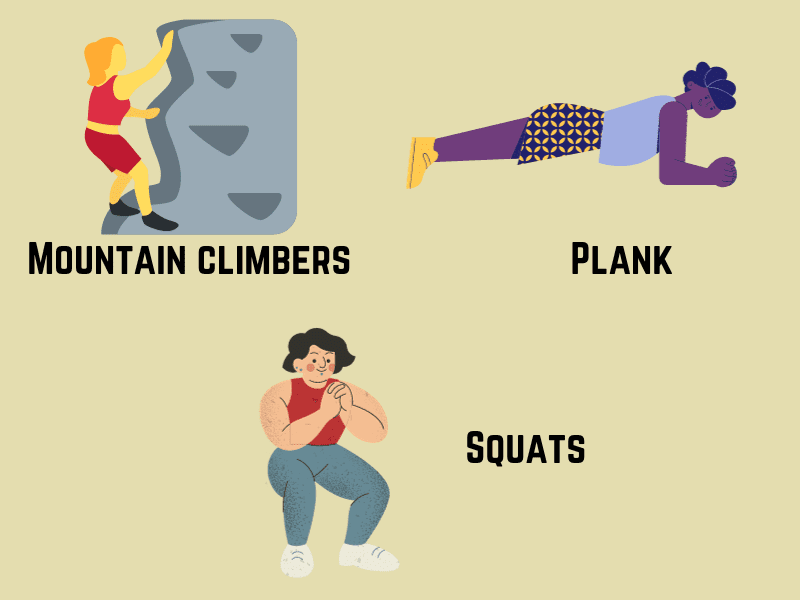
High-Intensity Interval Training (HIIT) has gained significant popularity in the fitness world due to its effectiveness in burning calories and improving metabolism. HIIT workouts involve short bursts of intense exercise followed by brief recovery periods, making it a time-efficient and challenging form of exercise.
One of the key benefits of HIIT workouts is their ability to burn a high number of calories in a relatively short period. The intense nature of the exercises engages multiple muscle groups and increases heart rate, resulting in a higher calorie burn even after the workout is complete. This makes HIIT an excellent option for individuals looking to maximize calorie expenditure and achieve weight loss goals.
Additionally, HIIT workouts have been shown to improve metabolic rate. The intensity and variability of HIIT exercises stimulate the body’s energy systems, leading to an increased metabolic demand during and after the workout. This can result in a higher metabolic rate throughout the day, meaning you continue to burn calories even at rest.
Interval training for weight loss has been widely studied, with research consistently showing that HIIT can be more effective than traditional steady-state cardio exercises for fat loss. The combination of intense bursts followed by recovery periods challenges the body’s energy systems and promotes fat burning while preserving muscle mass.
Incorporating high-intensity interval training into your fitness routine can provide numerous benefits such as increased calorie burn, improved metabolism, and effective weight loss. Whether you are short on time or looking for a challenging workout option, HIIT exercises offer a promising solution for achieving your fitness goals.
5. Mind-Body Workouts: Promoting Mental Wellness and Stress Reduction
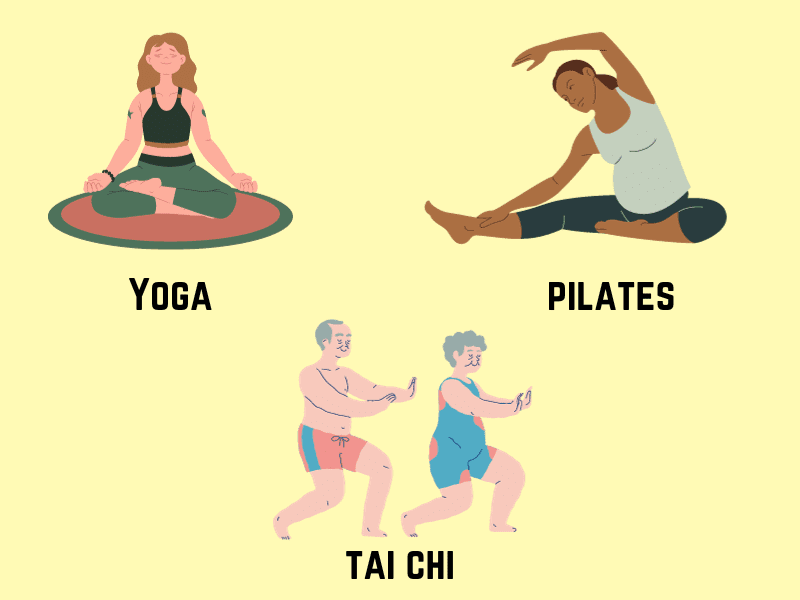
Mind-body workouts such as yoga, pilates, and tai chi have gained significant popularity in recent years due to their ability to promote mental wellness and reduce stress. These exercises combine physical movements with mindfulness and breath control techniques, creating a holistic approach to fitness and well-being.
Yoga, for example, incorporates various poses, breathing exercises, and meditation practices that help individuals achieve a state of calmness and mental clarity. It has been shown to reduce anxiety, improve sleep quality, enhance mood, and increase overall mental resilience.
Similarly, pilates focuses on core strength, flexibility, and body awareness. By engaging in precise movements combined with controlled breathing patterns, individuals can experience improved concentration levels and reduced stress levels. Additionally, pilates can help alleviate chronic pain conditions such as lower back pain.
Tai chi is an ancient Chinese martial art that combines slow and flowing movements with deep breathing exercises. This mind-body workout promotes relaxation while improving balance and coordination. Regular practice of tai chi has been associated with reduced symptoms of depression and anxiety as well as increased feelings of overall well-being.
Engaging in mind-body workouts not only provides physical benefits but also offers a range of mental health benefits. These activities allow individuals to connect their mind with their body through focused attention on movement and breath. By doing so, they can effectively manage stress levels by promoting relaxation responses within the body.
Incorporating mind-body workouts like yoga, pilates or tai chi into your fitness routine can have a profound impact on your mental well-being. These exercises offer a holistic approach to reducing stress while improving overall mental resilience. Whether you are looking for relaxation techniques or seeking ways to alleviate anxiety symptoms, exploring the world of mind-body workouts may be beneficial for promoting both physical fitness and mental wellness.
Incorporating a Variety of Workouts for Optimal Health and Fitness Benefits

Incorporating a variety of workouts into your fitness routine can have numerous benefits for your overall health and well-being. By diversifying your workouts, you engage different muscle groups, challenge your body in new ways, and prevent plateaus in your progress.
Optimal health is achieved through a holistic approach that includes cardiovascular endurance, muscular strength and endurance, flexibility, and balance. By incorporating a variety of workouts such as cardio exercises, strength training, yoga or Pilates, and high-intensity interval training (HIIT), you can target all these aspects of fitness.
The benefits of incorporating a variety of workouts are manifold. Firstly, it helps to prevent boredom and keeps you motivated to stick with your exercise routine. Secondly, it reduces the risk of overuse injuries by giving different muscle groups time to recover while others are being worked. Additionally, varying your workouts challenges your body in new ways and helps to improve overall performance.
In conclusion, incorporating a variety of workouts into your fitness regimen is key to achieving optimal health and reaping the maximum fitness benefits. By diversifying your exercises and targeting different aspects of fitness, you can enhance muscular strength and endurance, cardiovascular health, flexibility, balance, and overall well-being. So go ahead and mix up your routine – try new activities or classes – for a healthier body and mind.


6 thoughts on “Demystifying Workouts: A Beginner’s Guide to Fitness”